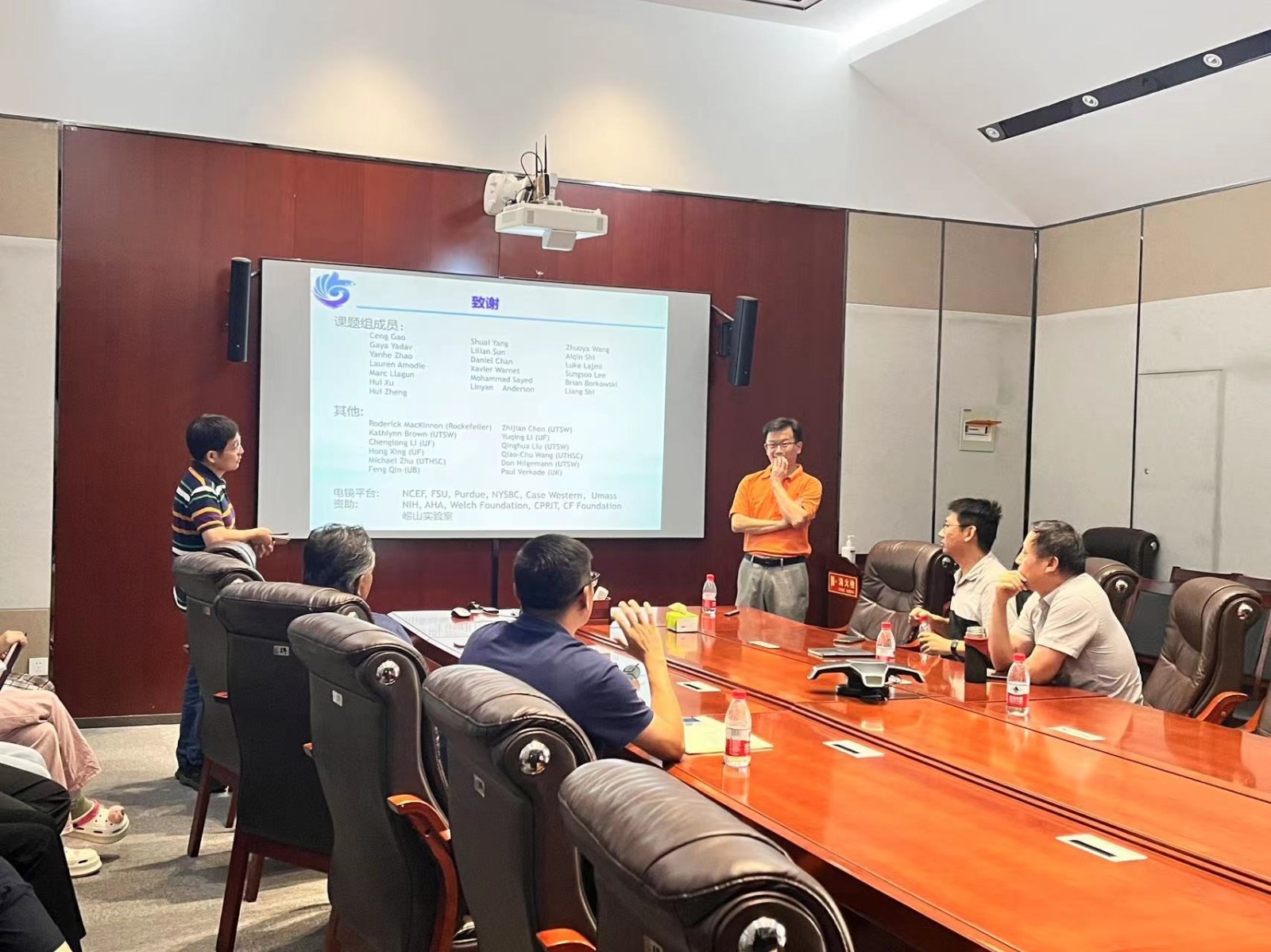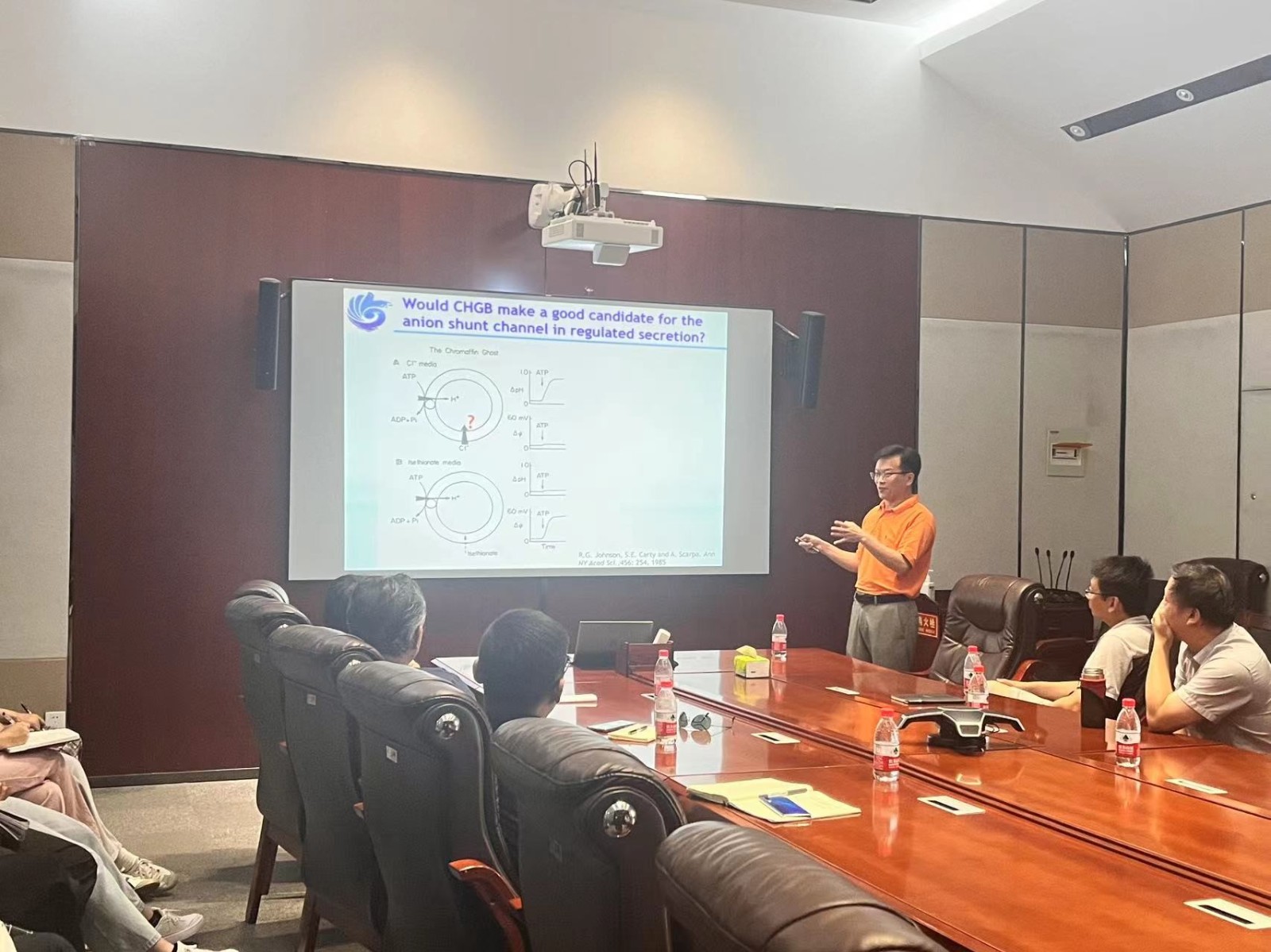On September 19th, Professor Qiuxing Jiang, a specially-appointed professor at Laoshan Laboratory, director of the Cryo-EM Center, and a specially-appointed expert of the Taishan Scholars Program, was invited by Professor Dalei Wu to be a guest at the Mountains and Seas: Knowing the Microorganism Forum Series where he delivered a report titled “Applications of Cryo-EM in Identifying Controlled Secretion of Anion Short Channels and Developing Molecular Medicine”. The lecture was hosted by Professor Dalei Wu.
At the beginning of the report, Professor Jiang first introduced Laoshan Laboratory and its Cryo-EM Center to the teachers and students present at the meeting. He briefly explained the cryo-EM method and its working principle, and elaborated on four different cryo-EM application modes for determining the three-dimensional structures of biological macromolecular complexes, cells or subcellular slices. This method rapidly fixes the sample in a glassy ice state at ultra-low temperatures and then irradiates it with an electron beam to form two-dimensional projection images, which are then reconstructed into the three-dimensional structure of the original sample through mathematical algorithms. Subsequently, Professor Jiang provided a detailed introduction to a negative ion short-circuit channel formed by chromogranin B (CHGB), and used cryo-EM to resolve the near-atomic resolution structure of the CHGB dimer, revealing its intrinsic ion channel physical characteristics. These findings provided important clues for further research on short-circuit channels. Then, Professor Jiang also shared the first successful case of rational drug design guided by near-atomic resolution cryo-EM structures. Through large-scale computational analysis of the possible binding states of the ligand molecule and combining with potential minimization and near 3.0 Å cryo-EM structures, Professor Jiang’s team screened out the best binding state. Subsequent molecular derivative design, computational analysis, and optimization led to more effective MTA-cooperative blockers for human protein arginine methyltransferase 5 (PRMT5). Finally, some of the teachers and students present raised different questions regarding the report content, and Professor Jiang provided detailed explanations and answers to each one. The successful holding of this report session was of great benefit to all the teachers and students present, broadened their academic horizons, and stimulated their enthusiasm for scientific research. It also provided them with a deeper understanding of the application of cryo-EM technology in the study of controlled secretion of negative ion short channels and in molecular medicine.
Professor Qiuxing Jiang is a distinguished professor at the Laoshan Laboratory and the director of the Marine Biological Cryo-Electron Microscopy Center. He obtained his bachelor's, master's, and doctoral degrees from the University of Science and Technology of China, the Institute of Biophysics of the Chinese Academy of Sciences, and Yale University, respectively. After completing his postdoctoral training at Yale and Rockefeller University, Dr. Jiang taught at the University of Texas Southwestern Medical Center, the University of Florida, and the State University of New York at Buffalo/Hopeman-Woodward Medical Research Institute, where he established and/or led the work of cryo-electron microscopy centers in these locations. He has received several awards, including the EUREKA Award from the National Institutes of Health (NIH), the National Innovation Award from the American Heart Association (AHA), and the Pilot Research Award from the Cystic Fibrosis Foundation. He has published nearly 45 papers in journals such as Nature, Cell, and PNAS. His main research directions include cell physiology and molecular biophysics, with unique contributions in areas such as the gating effects of membrane lipid molecules on voltage-dependent potassium ion channels, the role of ion channels in cellular secretion processes, the structural and functional regulation of intracellular RNA-binding protein complexes, and the chemical functionalization of nanoscale quartz carbon films or graphene films for applications in cryo-electron microscopy and membrane biology.


